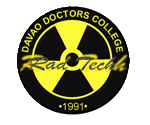Log in
Latest topics
» Anniversary of the Discovery of X-Rayby Admin Sat Nov 05, 2011 10:51 am
» First time members click here to join the fun
by Samjaypineda Fri Nov 04, 2011 10:40 pm
» RADICAL:THE COMIC SERIES
by muyco Tue Aug 16, 2011 1:35 pm
» EdmefoWkes
by Guest Tue Aug 02, 2011 4:52 am
» RT Day with other RT School ( s)
by Polon PearL Thu Jul 07, 2011 9:16 pm
Who is online?
In total there are 2 users online :: 0 Registered, 0 Hidden and 2 Guests None
Most users ever online was 82 on Mon May 31, 2021 1:28 pm
Computerized Axial Tomography Scan referred to as CT or CAT Scan
radiography101 :: Updates :: Updates
Page 1 of 1
 Computerized Axial Tomography Scan referred to as CT or CAT Scan
Computerized Axial Tomography Scan referred to as CT or CAT Scan

Computerized Axial Tomography
Scan
referred to as CT or CAT Scan
A CT Scan is a procedure that combines many x-ray images with
the aid of a computer to generate cross-sectional and three-dimensional
views of anatomy. CT Scans are performed to analyze the internal
structures of various parts of the body. CT Scans can identify
normal and abnormal structures and be used to guide procedures.
 CT
CTScans are preferred for numerous parts of the body including
brain, sinus, neck, chest, spine, abdomen, pelvis, and extremities.
CT Scans can also be beneficial for evaluating the heart and
lungs.
Some CT Scans require contrast material to be injected intravenously,
administered by mouth and/or by enema in order to increase the
distinction between various organs or areas of the body that have
circulation. The intravenous contrast is iodine-based liquid given
in the vein. Rarely, are there any adverse reactions to the intravenous
contrast. New intravenous contrast agents, such as Isovue have
been developed and are used at Radiology & Imaging Specialists
to decrease allergic reactions. If the patient has a history of
allergy to contrast material, the requesting physician and radiology
staff should be notified. Patients that are allergic to iodinated
products still may have a CT Scan performed with intravenous contrast.
To eliminate
 complication
complication with the contrast medium an antihistamine may be administered
prior to or after the examination. With the intravenous injection
patients may feel a warm sensation throughout their body or they
may experience a metallic taste in their mouth. This is a normal
reaction to the intravenous contrast.
Contrast administered by mouth is called barium. Oral barium
is a liquid contrast given to outline the bowel and distinguish
the bowel from other local structures with similar attenuation
values. Oral barium is to be ingested by the patient one hour
prior to the CT examination. Certain CT Scans require the barium
contrast medium to be administered rectally by the radiologic
technologist.
 CT
CT Scans are very low-risk procedures. The amount of radiation the
patient receives during a CT Scan is minimal and the results are
extremely advantageous. CT Scans provide a clear, accurate display
of tissues without superimposition of structures. CT Scans may
detect disease processes and lesions at an earlier stage than
with conventional imaging. CT Scans provide a wide range of imaging
and the technique does not have to be limited to specific organs.
CT Scans have vastly improved the ability of doctors to diagnose
many diseases earlier in their course and with much less risk
than previous methods.
Preparation and Special Instructions
Patients having CT exams scheduled without contrast medium require
no special preparation.
 In
In preparation for a CT Scan with the use of intravenous or oral
contrast medium, patients are often asked to be NPO (nothing by
mouth) four hours prior to having the exam.
Patients who require oral contrast need to arrive one hour prior
to their appointment to start the drinking process. It is
extremely important to drink plenty of fluids after having a CT
study performed with the use of an intravenous or oral contrast
medium. Drinking fluids help the body expel the contrast medium
through normal body functions.
Patients should continue to take their medications as prescribed.
If a woman is pregnant or thinks she might be pregnant, it is
important that she informs the referring physician. The patient
should also inform the radiologic technologist upon performing
the exam.
Please, bring any previous radiology studies and reports that
are related to this exam.
What to expect
 The
The CT Scanner is a large donut-shaped machine that acquires images
at many different angles around the body. The actual procedure
can take from a few minutes to forty five minutes. Patients are
asked to please remove all metallic materials, such as jewelry
and certain types of clothing prior to having the CT examination
performed. These materials may interfere with the clarity of the
images. Patients are placed on a movable table and the table is
slipped into the center of the large donut-shaped machine. It
is important during the CT procedure that the patients minimize
any body movement by remaining as still and quiet as possible.
For some CT Scans, special breathing instructions are required.
The radiologic technologist will inform the patient when to breathe
or hold his/her breath during the examination. If the CT exam
is to include intravenous contrast medium a small IV will be placed
by the radiologic technologist. The IV will be removed upon completing
the CT Scan. The technologist directly watches the patient through
an observation window during the procedure, there is an intercom
system in the room for added patient safety and communication.
If any problems are experienced during the CT Scan the technologist
should be informed immediately.
®krypton- Posts : 11
Join date : 2009-08-10
radiography101 :: Updates :: Updates
Page 1 of 1
Permissions in this forum:
You cannot reply to topics in this forum
